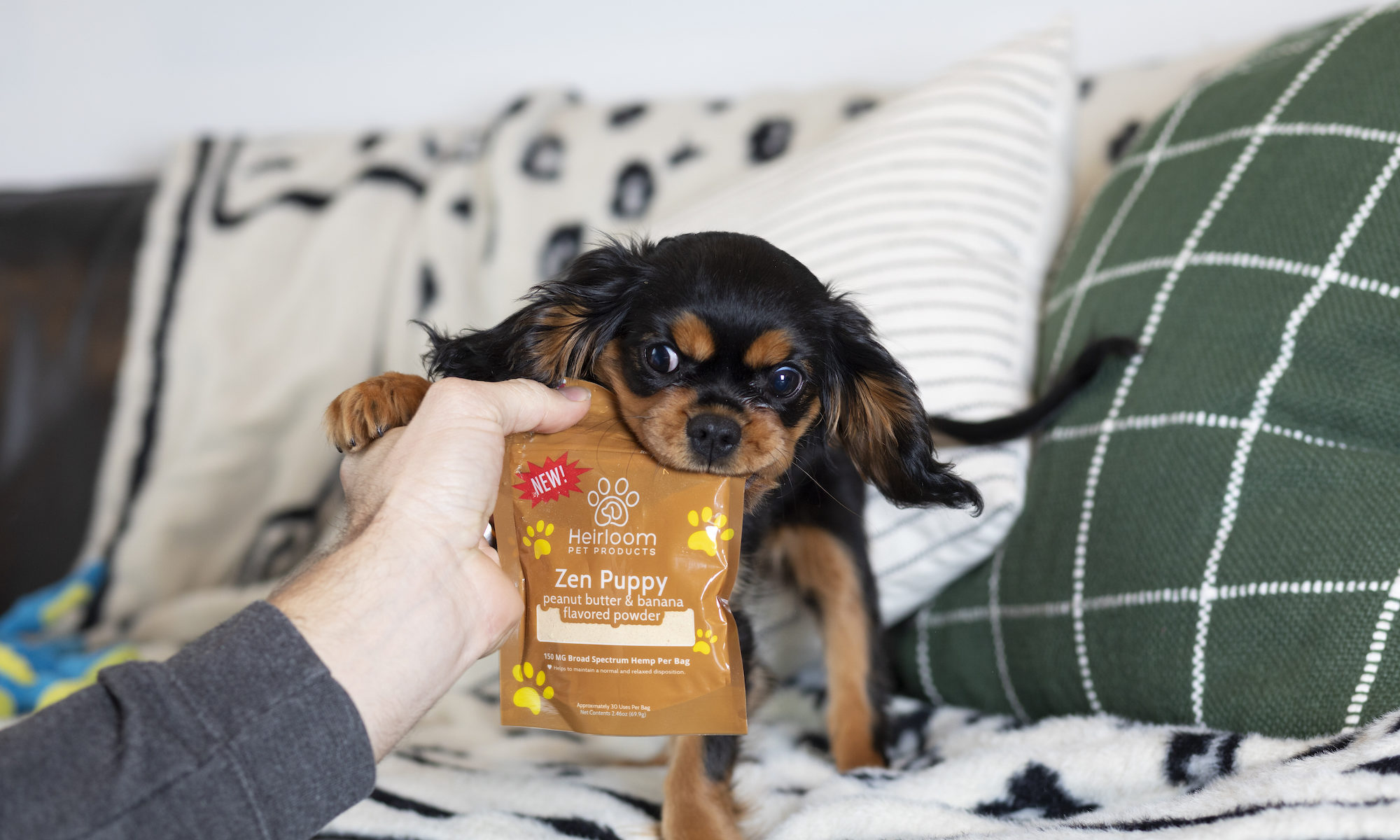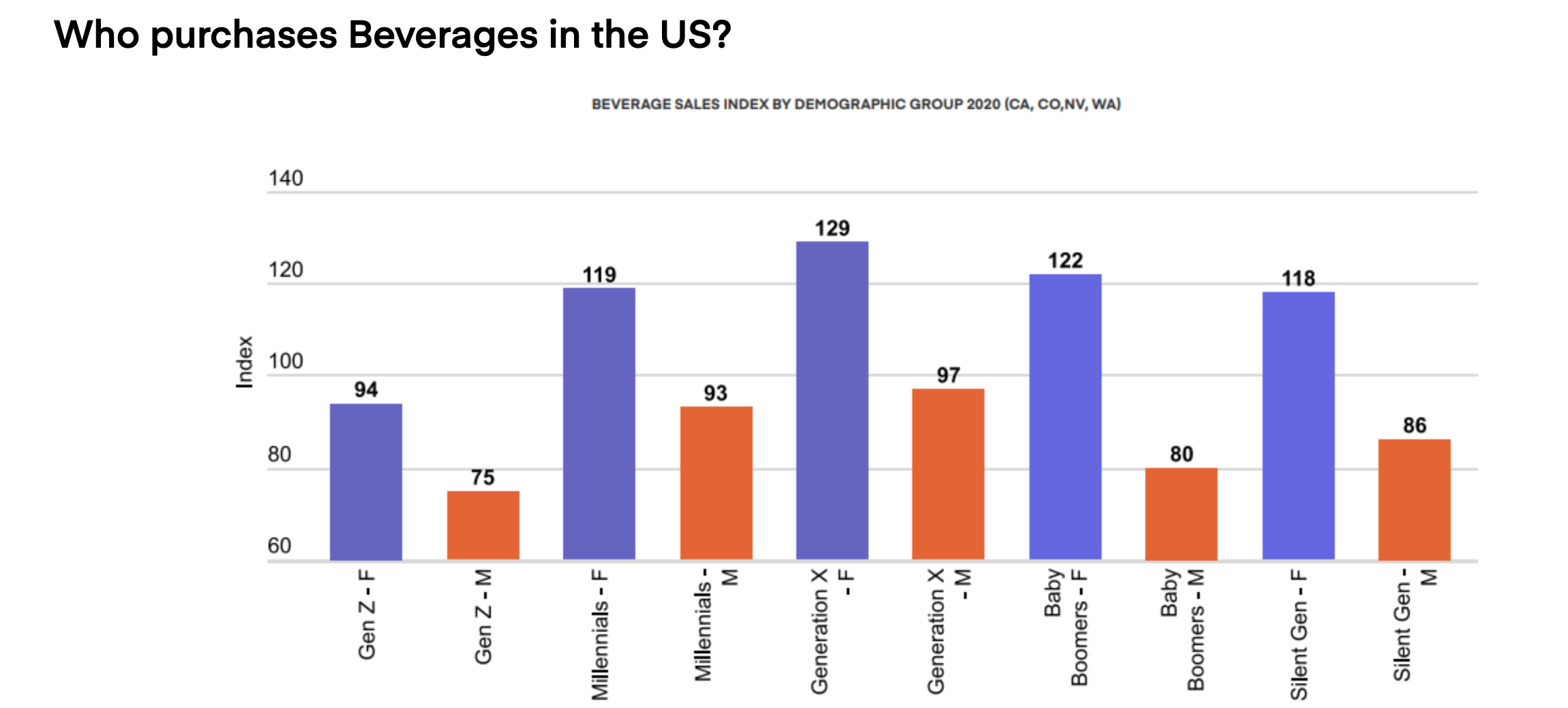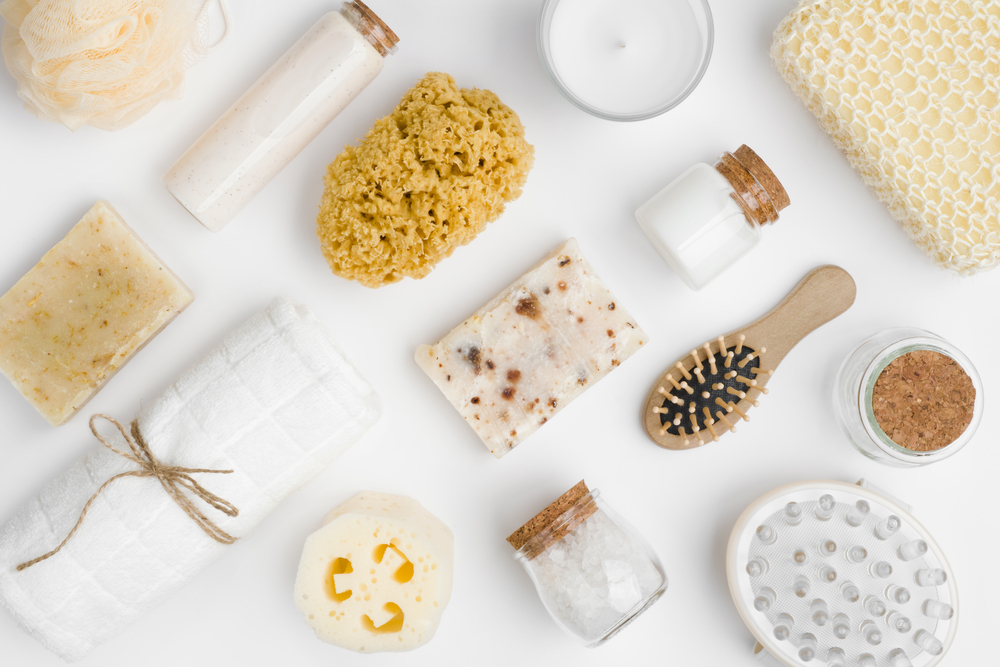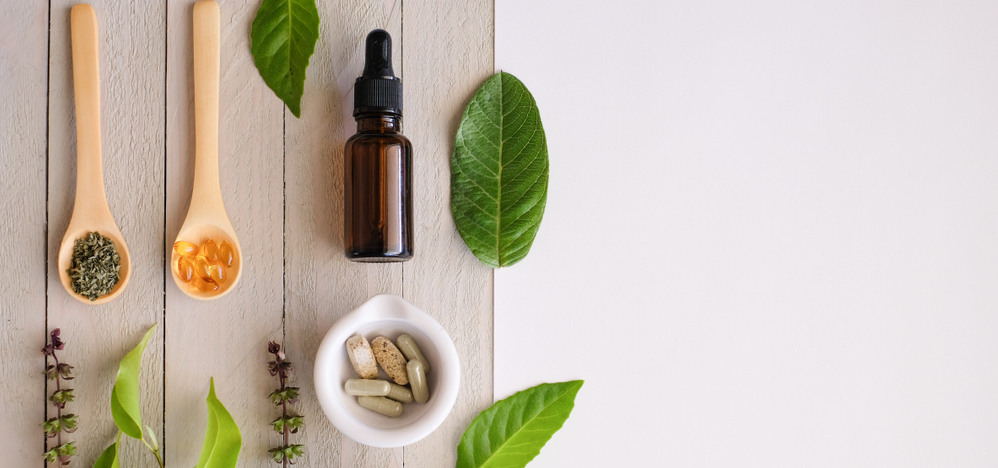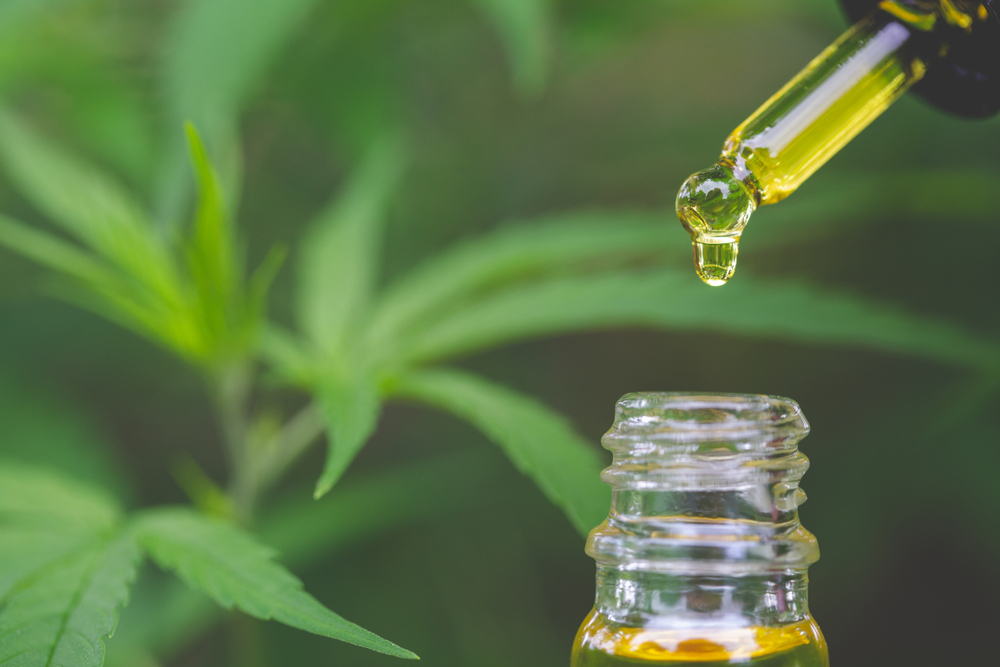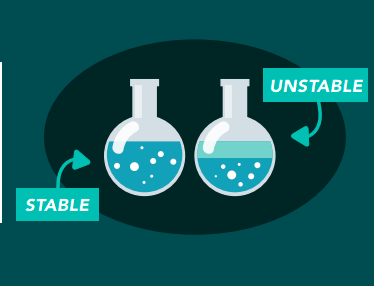In Spring 2020, when COVID became a presence in our everyday lives, athletes and non-athletes alike became increasingly more aware of their overall health, with a heightened focus on bolstering the immune system. Consumers took the time to research what functional ingredients would strengthen their immunity, help them sleep better, and decrease stress levels, which lead to them purchasing products with ingredients like CBD.
In the world of athletics, professional US leagues have changed their stance and rules around cannabis and CBD, mirroring the general public’s growing acceptance of cannabinoids and interest in their health benefits. In 2022, Major League Baseball became the first professional league to enter into a sponsorship agreement with a CBD company, as well as allow individual teams to sell sponsorships to CBD businesses. This year, the NBA announced that under the new 2023 Collective Bargaining Agreement, it will be removing cannabis from its banned substance list and will allow players to invest in and promote cannabis companies.
Many of professional athletes (active and retired) like Rob Gronkowski, Gabby Douglas, Megan Rapinoe, Tony Hawk, and Magic Johnson have extoled the virtues of CBD for a variety of sports-related health concerns including post-activity recovery, consumers who participate in athletics have gained interested in what the cannabinoid might do for them.
If you are an athlete who is curious about using cannabinoids including CBD but don’t know where to start or what to look for, here are some frequently asked questions and answers.
What is WADA, and how does it interface with international and national sports governing bodies in terms of determining anti-doping and drug policy?
WADA, the World Anti-Doping Agency, was formed in 1999 as an international, independent agency to coordinate the fight against doping in athletics. In 2004, it introduced “The World Anti-Doping Code,” the core document that aligns anti-doping policies, rules, and regulations within sport organizations and among public authorities around the world. It works in conjunction with six International Standards which aim to foster consistency among anti-doping organizations in various areas: Testing; laboratories; Therapeutic Use Exemptions (TUEs); the List of Prohibited Substances and Methods; the protection of privacy and personal information; and Code Compliance by Signatories. This unified approach addresses problems that previously arose from disjointed and uncoordinated anti-doping efforts.
One of the largest international governing bodies is the International Olympic Committee (IOC). They recognize other federations for individual sports: The Association of Summer Olympic International Federations (ASOIF), the Association of International Olympic Winter Sports Federations (AIOWF), and the Association of the IOC Recognized International Sports Federations (ARISF). The IOC has an Olympic Charter which sets rules and expectations for Olympic athletes. IOC defines doping as the occurrence of one or more of the antidoping rule violations as laid out in the charter. The rule topics include: Presence of a prohibited substance or its metabolites or markers in an athlete’s sample; use or attempted use by an athlete of a prohibited substance or a prohibited method; evading, refusing, or failing to submit to sample collection; tampering or attempted tampering with any part of doping control, and possession of a prohibited substance or a prohibited method.
In 2018, WADA declared CBD an acceptable substance. It is the first major agency to acknowledge CBD as a compound separate from marijuana (THC). That said, the organization does caution athletes using CBD to be aware of the THC levels in the CBD products they are using. Their guiding document states, “Synthetic cannabidiol is not a cannabimimetic; however, cannabidiol extracted from cannabis plants may also contain varying concentrations of THC, which remains a prohibited substance.”
This is the current list of Sports Organizations that have accepted the code.
What is each major athletic association/league’s stance on CBD and cannabis?
Each has their own stance on cannabinoid use, and they vary drastically.
FIFA (Fédération Internationale de Football Association)
Following WADA guidelines (see above), use of CBD is allowed, but THC is not.
NCAA (National Collegiate Athletic Association)
Cannabinoids including cannabis and CBD are listed as a banned substance in the NCAA’s Drug Policies for Your Health and Safety 2022 document.
MLB (Major League Baseball)
In 2022, MLB became the first professional sports league in the US to enter into a sponsorship agreement with a CBD company, and individual teams can sell sponsorships to CBD businesses. In 2019, it was the first professional league to remove cannabis from its list of banned substances. In a press release, MLB in association with the Players League commented, “Natural cannabinoids (e.g., THC, CBD, and Marijuana) will be removed from the Program’s list of Drugs of Abuse. Going forward, marijuana-related conduct will be treated the same as alcohol-related conduct under the Parties’ Joint Treatment Program for Alcohol-Related and Off-Field Violent Conduct, which provides mandatory evaluation, voluntary treatment and the possibility of discipline by a Player’s Club or the Commissioner’s Office in response to certain conduct involving Natural Cannabinoids.”
MLS (Major League Soccer)
If a substance is banned by the US Anti-Doping Agency or FIFA, it is banned by the league. Following WADA guidelines, use of CBD is allowed, but THC is not.
NBA (National Basketball League)
Under the new 2023 Collective Bargaining Agreement, the NBA is removing cannabis from its banned substance list and allowing players to invest in and promote cannabis companies. If a player shows signs of “problematic dependency” of cannabis, the league will reach out to them for possible treatment.
NFL (National Football League)
The NFL’s current drug policy prohibits the use of THC and synthetic cannabinoids. If a player consumes hemp-derived CBD oil with 0.3% THC or more, they might be disciplined. The most recent collective bargaining agreement ended the policy of suspending players for a positive cannabis test. If a player tests positive during the first two weeks of training camp, the test is reviewed by a group of medical professionals appointed by the players and league. That board then decides if the player needs treatment.
NHL (National Hockey League)
The NHL essentially has two drug policies. The first is the performance enhancing drug policy which bans drugs such as stimulants, growth hormones, anabolic agents and drugs that are considered to give players an advantage. The second is the SABH program (Substance Abuse and Behavioral Health). This program was designed for the specific purpose of dealing with issues of substance abuse for players in a confidential manner. If they determine a player’s drug test features “abnormally high levels” of THC, they will contact the player, recommend they enter the SABH, in which they’ll develop an individualized treatment plan, but they are not forced to go.
WNBA (Women’s National Basketball League)
Cannabis is a banned substance in the WNBA; however, the league will not test players for use during the offseason and has reduced the penalties for a player use in season. Instead of issuing a suspension after a first offense, players will be issued a fine.
USA Triathlon
Under USADA and WADA, CBD is an acceptable substance for triathletes to use. In fact, they have created a partnership with a company producing CBD products.
Is CBD legal in every state?
Purchasing hemp-derived CBD is federally legal if it does not contain more than 0.3% THC, but some state laws have different regulations for CBD. Some put conditions on CBD products and restrictions on what buyers can purchase and for what reason. For example, some states like Georgia only allow CBD for medicinal use for specific conditions.
What’s the difference between hemp-derived CBD and marijuana-derived CBD?
Hemp and marijuana come from the same family of plants, Cannabis Sativa L. Hemp-derived CBD and marijuana-derived CBD contain different levels of THC. Hemp plants contain less than 0.3% THC content, while marijuana plants contain higher levels of THC. For more information, check out our blog, Full Spectrum, Broad Spectrum, and Isolate: What’s the Difference?
Are all CBD products THC-free?
No. Most CBD products are likely to have trace amounts of THC, particularly if the CBD was sourced from marijuana plants as opposed to hemp plants. Most CBD products contain non-detectable THC; products featuring CBD isolate have 0% THC in it.
For more information, check out our blog: Hemp-Derived CBD Vs Cannabis-Derived CBD.
What does non-detectable (ND) THC mean?
Some companies offer CBD products with non-detectable THC. As mentioned above, the industry and legal standard for THC concentration in CBD products derived from hemp is less than 0.3% THC by weight. This means that a CBD product may legally contain up to three parts of THC for every 1000 parts of oil by weight. To determine if a product is within this legal limit, reputable CBD manufacturers have their products tested by third-party labs to obtain a Certificate of Analysis (COA). The letters “ND” indicate this “non-detect” level of THC in a product. The THC amount in said product is too small to be detected by the instruments used in third-party testing.
Will CBD show up on a drug test?
CBD should not show up on a drug test, but there have been cases of people using CBD products testing positive for THC. It depends on the quality and composition of the product the person is taking, as many CBD products contain trace amounts of THC. Hemp-derived CBD products are less likely to contain THC because they are legally required to have less than 0.3% THC content. Athletes who want to use CBD products but are afraid of failing a drug test should look for products featuring CBD isolate.
What should consumers look for when selecting a CBD product? What should they look for on a product label to make sure there is no detectable THC in it?
When it comes to product selection by the consumer, it’s important to look at company websites and read product reviews. Most importantly, the consumer should look for products that have been tested for quality and safety throughout the production process and that the product has a Certificate of Analysis (COA) This document is a lab report that verifies the chemical makeup of the product.
Product labels display dosing information, milligrams of CBD, serving size/servings per container, CBD oil source, manufacturing date, batch and lot number, license numbers and third-party verification.
If you are looking specifically for a product with no detectable THC, make sure the product is hemp derived. To do this, ask for a copy of the Certificate of Analysis (COA). Many product websites and retailers have the COA available online. Cross check the CBD concentration on the product label with that on the COA. If they match, and the COA indicates “ND” for D9-THC, then there is no detectable THC in the product.
Are there any side effects after ingesting CBD?
Harvard Medical School physician, Peter Grinspoon, states that side effects of CBD can include “nausea, fatigue and irritability.” CBD can also “increase the level in your blood of the blood thinner coumadin, and it can raise levels of certain other medications in your blood by the exact same mechanism that grapefruit juice does.” If you decide to try CBD and take other medications, consult with your doctor about possible interactions.
How long does CBD stay in your system after ingestion?
This depends on the way you ingest CBD. Also take into consideration that each person processes cannabinoids differently based on our unique body compositions. To learn more about consumption methods, check out our blog: Consumption Methods For Your Lifestyle.
If you are an athlete looking for a CBD-infused beverage Powered by SōRSE for before, during, or after your workout, look no further than Adapt Brand’s SuperWaters. These beverages were created by an athlete, CEO Richie Harrington, for athletes. The beverages contain coconut water which is known for its hydrating qualities and other good-for-you functional ingredients and antioxidants which help with recovery and inflammation, like Mango, Pomegranate, hibiscus flower, chamomile and CBD. Adapt SuperWaters are also NSF: Certified for Sport, which verifies they have undergone rigorous testing and are safe for use by professional and amateur athletes alike.





